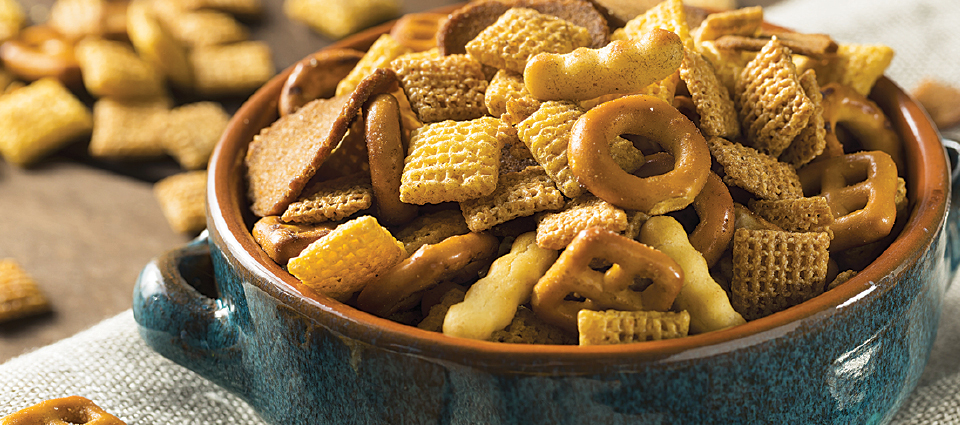Snack Attack: Capitalize on Cravings
July 09, 2018Snacking is huge.
The global snack market is expected to grow more than 6 percent by 2024. Snack sales revenue is expected to reach $219.6 billion in the next 6 years.
We provide an overview of everything you need to know to capitalize on the snack food industry. We outline how often people snack, which snack foods they are buying, what their favorite snack foods are, overview the better-for-you snack food crave and look at Millennial snacking habits.
Feeding Frequency
Snacking is a regular occurrence in people’s eating habits. Most snack an average of 4-5 times daily.
94% of consumers ate a snack yesterday and 91% of consumers drank a beverage as a snack yesterday.
31% of 18-34 year-olds snack 3 or more times between meals daily and 18% of 35/older snack 3 or more times between meals daily.
Snacks are also seen as a viable replacement for meals. 78% of consumers choose snack foods as their lunch. Substituting snacks for meals isn’t just for lunch time. Here’s how often each generation replaces full meals with snack foods “very often” or “often”:
• 26% Younger Millennials
• 19% Older Millennials
• 15% Gen X
• 31% Baby Boomers
• 11% Silent Gen
What makes people reach for a snack? The top 3 factors impacting snack choices (in order of importance):
• taste
• real/whole/clean ingredients
• personal/social factors (worker or animal welfare, sustainable, benefiting the local community, etc.)
Snack Spending
Snacks are gobbling up a growing share of the market. The overall snack market is worth an estimated $42.5 billion. Snack sales are up 3.4% from 2017.
The average household spends $115 on snack food annually, which is 3% of the total food budget. If snack food is expanded to include fruit and cheese, the average household spends $267 annually on snack food, which is 7% of the average annual $3,935 food budget.
Interestingly, private label snacks account for 10% of all snack sales. This fits with the overall growth in private label brands. Many grocers are offering their own store brands for snack foods like trail mix, veggie chips and pretzels.
Salty snacks accounted for the most growth and the most sales revenue from 2017 to 2018. There was nearly $1 billion year-over-year growth in the salty snacking category. Here’s a rundown of snacking performance by category both for sales revenue and growth from 2017 to 2018:
• Salty snacks $944.4 million; 3..4% growth
• Sweets and desserts $250.2 million; 0.9% growth
• Candy, gum & mints $228.1 million; 0.9% growth
• Snack & variety packs $117.5 million; 11% growth
• Cookies & crackers $86.9 million; 0.6% growth
• Bars $84.9 million; 1.4% growth
• Nuts & seeds $56.8 million; 1.1% growth
• Value-added fruits & vegetables $37 million; 0.7% growth
• Fruit snacks $32.7 million; 3.2% growth
• Jerky $6.8 million; 0.5% growth
• Cheese and yogurt -$380.1 million; 1.3% decrease
Favorite Foods
What qualifies certain foods as “snacks” and other foods as “meals?” As it turns out, the definition of snack foods is fairly fluid. 32% of 18-34 year-olds think any food can be a snack if the portion is small and
39% of 35/older think any food can be a snack if the portion is small.
Snacks don’t necessarily need to crunch. What people snack on:
• 42% food and beverages
• 41% food only
• 17% beverage only
Of course, favorite snacks vary by generation. These are the top 5 snack foods preferred by each generation (most to least preferred):
• Younger Millennials
1) chips
2) fruit
3) crackers
4) nutritional bars
5) cookies
• Older Millennials
1) fruit
2) chips
3) cookies
4) crackers
5) nutritional bars
• Gen X
1) chips
2) fruit
3) nuts
4) crackers
5) cookies
• Baby Boomers
1) chips
2) fruit
3) crackers
4) nuts
5) cheese
• Silent Gen
1) cheese
2) crackers
3) chips
4) nuts
5) fruit
Buying Better-for-You
Snacks aren’t limited to salty or sweet treats. Healthy, or better-for-you snacks, are an important segment of snack foods. You may have noticed that fruit landed in the top 5 favorite snacks for each generation in the roundup in the above section of this article.
Millennials and parents are driving the better-for-you snack craze (more on Millennials below). Parents are willing to spend an average of $1.53 or more for a better-for-you snack if their child will eat it. 82% of parents bought at least one better-for-you snack within the past month because it seemed like a healthier option and they thought there was at least a chance their child would eat it.
Customers have specific criteria in mind when they look for healthy snacks. 46% of consumers look for protein in their snack food. 20% of consumers consider food products with no artificial ingredients to have influenced their food purchases.
The trending healthy snack foods that consumers are buying in 2018 include:
• fermented foods (yogurt, kefir)
• snacking vegetables
• dips, spreads and hummus
• nuts and seeds
• ancient grains (quinoa, millet)
• crunchy, roasted legumes
• crisped and seasoned root and leafy vegetables
Millennial Munchies
Not only do Millennials like to snack, but their per capita snacking is expected to increased 12%. Most Millennials snack 4 or more times daily.
The key factors that influence Millennial’s snack purchase decisions:
• 89% taste
• 75% satisfies hunger
• 67% quality ingredients
• 63% healthier
• 54% easy to eat on the go
Millennials are also driving the better-for-you snack category. 89% of Millennials eat better-for-you snacks at least once a week and 55% of Millennials ate at least 3 better-for-you snacks in the past week.
Millennial moms buy more better-for-you snacks than any other generation. 10% of Millennial moms bought 4 new healthier snack types in the past month (vs. 5% of Gen X moms).
Millennials are also quite social with their better-for-you snacking. 68% of Millennials have recommended a better-for-you snack to someone else. 41% of Millennials tried a better-for-you snack because of an online review and 37% of Millennials have tried a better-for-you snack because of someone else’s social media post.

